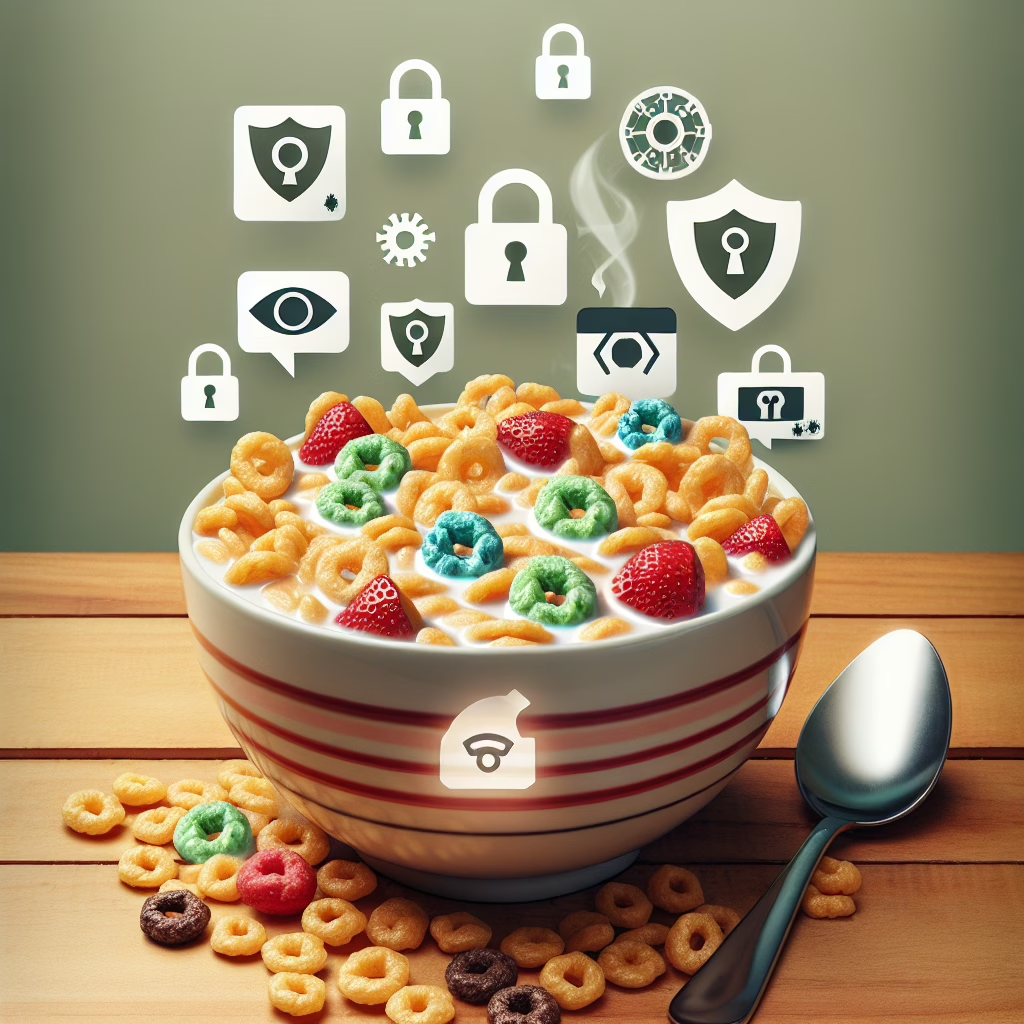In a world where our breakfast cereals might just know more about us than our own mothers, Kellogg’s recent data breach has stirred up quite a ruckus. Yes, you heard it right—while we thought our biggest dilemma was deciding between Corn Flakes and Frosted Flakes, it turns out we should have been more concerned about our personal data! The revelation has left many feeling like they’ve bitten into a stale Rice Krispie—unexpected and a tad unsavory.
Kellogg’s Data Breach: What’s the Crunch?
On a seemingly ordinary day, Kellogg’s decided to reveal that they had experienced a data breach. You might be wondering, what does this mean for those of us who just want to enjoy a bowl of cereal in peace? Well, let’s break it down without getting too soggy. During this breach, sensitive information was exposed. This included names, addresses, and even social security numbers—talk about bringing the personal touch to breakfast!
Now, before you toss out all your Kellogg’s products in a panic (please don’t waste perfectly good cereal), let’s take a moment to digest what happened here. The company stated that they had acted quickly to contain the situation. They’ve assured us that they are working with cybersecurity experts who likely have more degrees than your average college professor. Their proactive measures aim to bolster security and regain consumer trust.
How Did This Happen?
You might be scratching your head wondering how a company known for its delightful breakfast options could fall victim to such an unfortunate incident. Well, dear reader, cybersecurity is like making the perfect bowl of cereal; it requires the right ingredients and constant vigilance! Hackers are always on the lookout for the next big score, much like kids eyeing the last cookie in the jar.
The breach was attributed to cybercriminals exploiting vulnerabilities in their systems. Think of it as someone sneaking into your pantry when you’re not looking. It’s important to remember that no system is completely foolproof. Just as you wouldn’t leave your front door wide open while you go out for a jog, companies need to lock down their data with strong security measures.
Steps to Protect Your Data
Now that we’ve had our fill of Kellogg’s misadventures in cybersecurity, let’s talk about how you can protect your own data from becoming part of someone else’s breakfast discussion.
- Change Your Passwords: If your password is still ‘password123’, it’s time for an upgrade! Use a mix of letters, numbers, and symbols. Make it as complex as your morning coffee order!
- Enable Two-Factor Authentication: This is like adding a security guard at your front door. It makes it much harder for intruders to get in.
- Monitor Your Accounts: Keep an eye on your bank statements and online accounts. If something looks fishy—like finding raisins in your cereal—act fast!
- Educate Yourself: Knowledge is power! Learn about phishing scams and other tactics used by cybercriminals so you don’t fall for them.
External Resources and Related Breaches
For further reading on related breaches and how companies handle similar situations, see articles such as “Massive Europcar data breach affects around 200,000 customers” and “Texas State Bar hit by possible ransomware attack, warns of data breach”. Understanding these incidents can expand your insights into the cybersecurity landscape.
The Final Crunch
The takeaway from Kellogg’s data breach saga is clear: while we enjoy our breakfast cereals, we must also keep our data safe from potential dangers lurking in the digital pantry. Remember, cybersecurity isn’t just for tech wizards; it’s essential for everyone who uses the internet—even if it’s just to look up cereal recipes!
So next time you pour yourself a bowl of Special K or Rice Krispies, take a moment to reflect on the importance of protecting your personal information as diligently as you protect that last spoonful of honey-flavored goodness.
Now that we’ve crunched through this topic together, I invite you to share your thoughts! Have you ever faced a data breach? How did you handle it? Let’s chat in the comments below!
A big thank you to TechRadar for providing the initial scoop on this crunchy conundrum!

